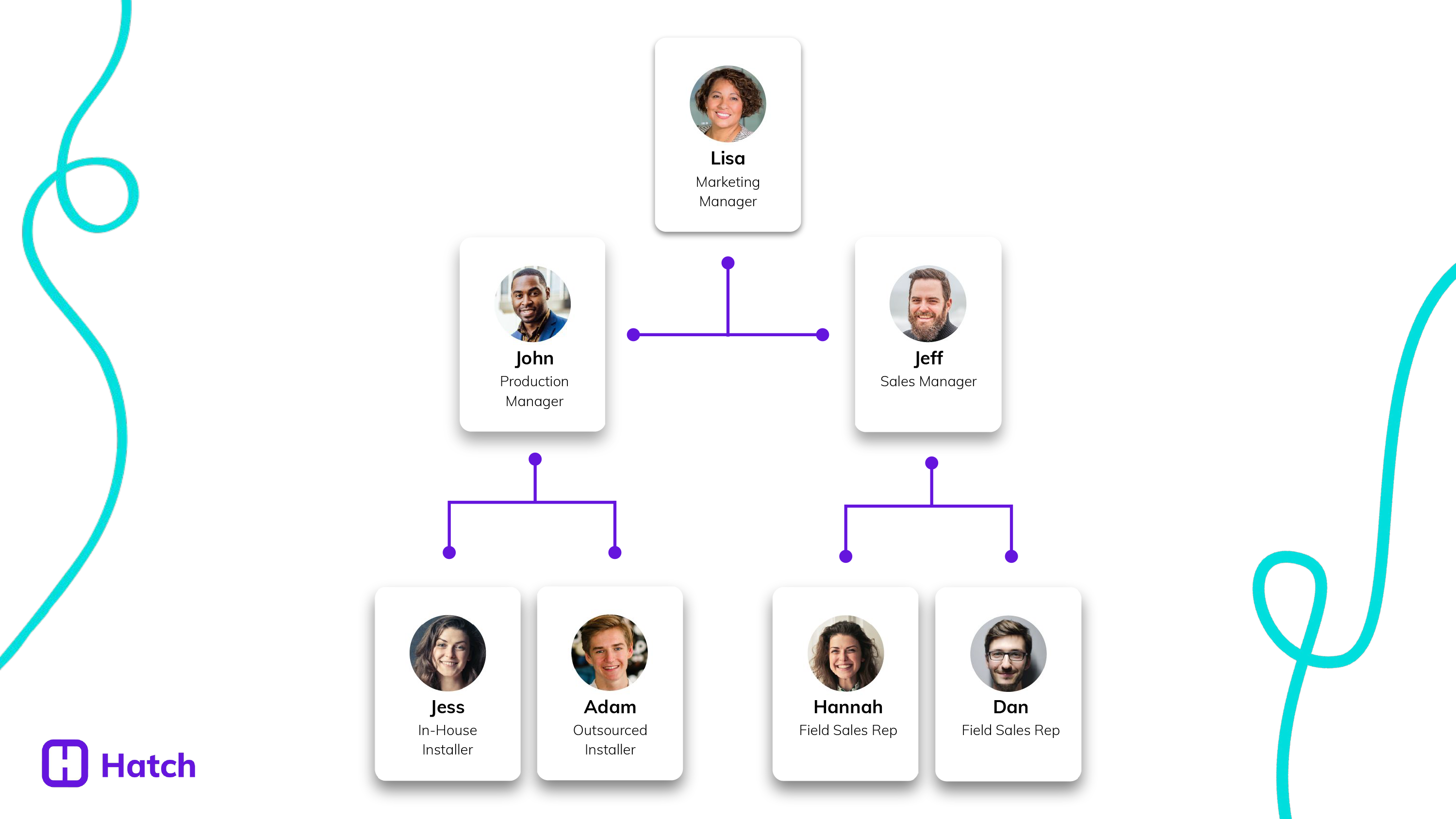You do your best to create a great customer experience for every homeowner. At the end of the day, though, you can't please every single customer.
Effectively handling a negative review can be just as powerful as a positive review - maybe even more.
Online reputation firm Revoo found that website visitors who land on your site after seeing effectively handled negative reviews:
- Spend 5x more time on your site.
- Trust your positive reviews far more.
- Convert to leads nearly 85% more often.
The old adage "it seems too good to be true" applies to how people talk about your business online, too.
In this article, we'll dive into:
Who Should Handle Your Reviews?
Reputation management is a job that can easily slip between the cracks because nearly every role in your organization can (and should) play a part. The tricky part is defining who the first line of defense is.
- As an owner, you're the most knowledgable to defend your business' reputation online.
- As a sales manager, you need visibility to coach your reps on possible objections (e.g. lead mentions a negative review in sales process).
- As a production manager/customer service manager, finding out what went wrong helps you avoid mistakes in the future and manage outsourced install teams.
- As a marketing manager, you already manage social channels where reviews are posted.
Here's how the best performing teams set themselves up to handle reputation management.

As outlined in the scenarios above, the ideal owner for reputation management is your marketing manager.
Because this person already lives in your social media accounts, they're the ones that most likely receive the first notification when a review gets left.
Whether Facebook, Google MyBusiness, Yelp, or some other platform - your marketing manager needs direct access into every place a customer can leave a review for your company.
From there, your marketing manager should pass along reviews to both your production manager to appropriately handle install-specific customer issues AND your sales manager for visibility around potential lead objections based on the review they find online.
Sometimes negative reviews aren't left where you can see them. In this case, there's a whole subsection of reputation management called "social listening."
This allows you to see what people are saying your business name without tagging you directly.
On most social media search functions, you can use quotations to phrase search your business name.

This varies from site-to-site, and you can get very granular with different filters, but this is generally a great way to monitor what people are REALLY saying about your company. 
How to Handle Negative Reviews
Bad reviews are inevitable (and hopefully few and far between), but it's important to know how to handle them correctly when it does happen. It's easier than you might think to handle responses - follow these basic guidelines when crafting your responses.
Thank them for taking time out of their day to leave a review.
Always start your response by thanking a customer for their review. This goes for both good and bad reviews, but especially for bad ones. This is a great way to defuse an angry customer from the beginning - be sincere, not sarcastic.
Hi [First Name]. First, thank you for taking the time to leave us this review.
Express regret about the situation this customer endured.
Reiterate the situation and preface it with a statement to show empathy. Expressing regret shows humility and compassion. It also goes a long way with how another potential customer reads your response.
We're so sorry you had such a negative experience during the installation of your new windows.
Establish a value statement related to the customer's negative experience.
Mention your commitment to providing a good customer experience as it relates to the specific situation. Again, reiterate your regret by ending this statement with something along the lines of how the situation is unacceptable on your end.
We hold our installation teams to the highest standards in our industry, and the fact that this occurred is completely unacceptable on our end.
Mention that you're sharing the feedback with your team.
Giving your customer the validation that their concerns will be heard is powerful. Wrap up your review response by mentioning that their comments will be shared with the appropriate members of your team. Don't let this be an empty promise - give your team visibility on the comments.
I am sharing this feedback with our production team immediately to ensure that this situation doesn't occur again. If you have any more feedback, questions, or concerns, please reach out to us directly.
What NOT To Do When Handling Reviews
- Don't get defensive. Establish the fact that you're open to criticism and you have concern for the negative experience.
- Don't discuss specific details related to the project. Not only does this reflect poorly on your business, but getting into a long-winded explanation looks like you're trying to justify a poor experience.
- Don't copy and paste the guidelines in this article for every response. 🙂 It's important to seem sincere, and that's hard to establish when every single review looks exactly the same. Be sure to reference specific team members and situations to make your responses seem authentic. Write in your company's specific voice. Consumers aren't dumb - they'll sniff out canned responses fairly quickly.
